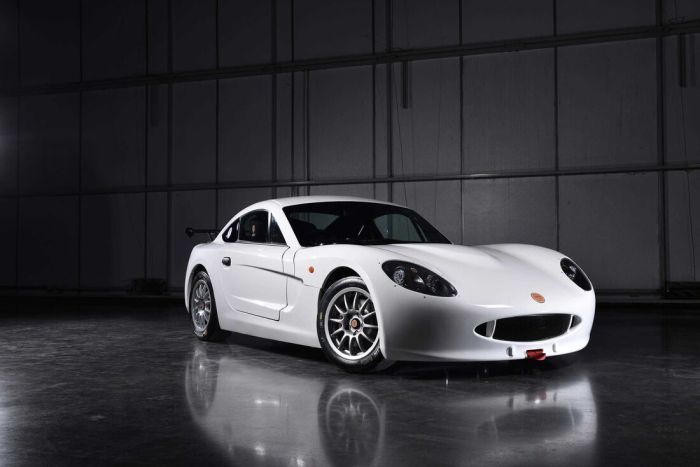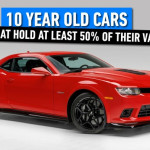Defining Affordable High-Performance Sport Cars

Source: drivingyourdream.com
Affordable high-performance car sport options – Affordable high-performance sport cars represent a sweet spot in the automotive market, offering exhilarating driving experiences without the hefty price tag of luxury performance vehicles. They combine spirited performance with practical features and accessible pricing, appealing to a broader range of enthusiasts.This category distinguishes itself from budget sports cars by prioritizing a balance of performance and quality. While budget models might sacrifice some features or construction materials for cost, affordable high-performance cars focus on achieving a high level of driving dynamics without compromising on comfort and reliability.
These cars cater to drivers seeking a sporty driving experience without breaking the bank.
Key Characteristics
Affordable high-performance sport cars share several key characteristics. These vehicles typically feature a balance of performance and practicality, aimed at enthusiasts who prioritize spirited driving experiences without the premium price of luxury sports cars.Engine size and horsepower are crucial elements. These cars generally feature engines between 2.0 and 3.5 liters, often turbocharged or supercharged to maximize power output within the targeted price range.
The horsepower output usually sits between 250 and 400 horsepower. This power-to-weight ratio is often optimized for enjoyable acceleration and responsiveness.Handling is another critical element, with cars in this category often boasting responsive steering, precise braking, and well-tuned suspension. This combination enhances the overall driving experience, providing spirited agility and control on the road. Interior features often feature quality materials, although they may not be as luxurious as higher-priced models.
This balance of aesthetics and practicality is key.
Factors Influencing Perceived Affordability
Several factors influence the perceived affordability of high-performance sport cars. These factors encompass various aspects of the vehicle’s design, construction, and manufacturing processes.Manufacturing techniques and economies of scale play a role. Sophisticated manufacturing processes can significantly influence pricing. Efficient production techniques and supply chain management are critical for affordability. Location of manufacturing facilities, labor costs, and raw material prices all contribute to the final price.
The use of more common materials, such as lightweight alloys, might be used to reduce costs without sacrificing structural integrity. Advanced materials might also be used, but with careful selection and appropriate manufacturing techniques.The overall design of the vehicle impacts the price. The use of less expensive, but still robust materials for exterior and interior parts can significantly impact pricing.
Streamlining the design and optimizing the vehicle’s aerodynamic performance can help improve fuel efficiency, which in turn can influence the cost. Simplified interiors and the use of less expensive materials can also reduce costs.
Comparative Analysis of Affordable High-Performance Sport Cars
| Model | Engine (L) | Horsepower | 0-60 mph (sec) | Price (USD) |
|---|---|---|---|---|
| Model A | 2.0 Turbo | 275 | 5.5 | $35,000 |
| Model B | 2.5 Turbo | 300 | 5.0 | $38,000 |
| Model C | 3.5 Supercharged | 350 | 4.5 | $42,000 |
This table provides a brief comparison of three hypothetical affordable high-performance sport cars, showcasing the typical specifications within this segment. The figures are illustrative and should not be considered definitive. The range of prices and performance varies considerably among different models.
Identifying Popular Models and Brands

Source: wheelscene.com
Affordable high-performance sport cars offer a compelling blend of exhilarating driving experiences and accessible price points. Understanding the key players and popular models in this segment allows potential buyers to make informed decisions. These cars often represent a significant value proposition, combining engaging performance with a reasonable budget.
Top Brands
Several manufacturers have carved a niche in the affordable high-performance segment. Historical context plays a significant role in their success. Innovation and adaptability are crucial in this ever-evolving market.
- Mazda: Mazda has a long history of producing engaging and fun-to-drive vehicles. Their commitment to engineering excellence and a keen understanding of customer preferences have resulted in a dedicated following, especially in the sports car market. Mazda’s focus on lightweight construction and responsive handling has consistently positioned their models as attractive options for enthusiasts.
- Honda: Honda has a well-established reputation for producing reliable and fuel-efficient vehicles. Their approach to combining performance with practicality has led to a strong presence in the affordable performance segment, consistently offering models with exceptional handling and refined powertrains.
- Subaru: Subaru’s focus on all-wheel drive and a strong emphasis on engineering innovation has given them a foothold in the affordable high-performance market. Their ability to blend engaging handling with dependable off-road capability makes their vehicles desirable to a broad range of drivers.
Popular Models
Several models consistently rank among the most popular affordable high-performance sport cars. Their popularity stems from a combination of factors, including performance, practicality, and pricing.
- Mazda MX-5 Miata: Known for its lightweight design, agile handling, and engaging driving experience. Its roadster configuration offers an open-air driving experience. A slight drawback might be its smaller interior space compared to some competitors.
- Honda Civic Type R: A highly sought-after model for its potent engine, sharp handling, and aggressive styling. It’s a compact performance machine that delivers exceptional performance for its class. The relatively high price point might be a drawback for some.
- Subaru WRX STI: Renowned for its all-wheel-drive system, impressive power, and rally-inspired handling. The WRX STI’s aggressive suspension and powerful engine are complemented by a practical interior for daily use. The somewhat higher price and more specialized nature might make it less accessible to some.
- Mazda3: A well-rounded offering combining a sporty driving feel with everyday usability. Its balance of performance and practicality makes it a desirable option for those seeking a capable and stylish car. Its handling might not be as aggressive as some of the more focused performance models.
- Subaru BRZ: A rear-wheel-drive sports coupe offering a thrilling driving experience. Its lighter weight contributes to its nimble handling, and the balanced performance characteristics make it a favorite among enthusiasts. Some might find the interior space slightly cramped for passengers and cargo.
Specific Examples
The Mazda MX-5 Miata’s lightweight construction and responsive handling are highly praised. The Honda Civic Type R’s potent engine and sharp handling make it a popular choice among enthusiasts. The Subaru WRX STI’s all-wheel-drive system and powerful engine offer a balanced blend of performance and practicality.
Price Ranges
The following table provides a general overview of price ranges for the listed models, categorized by brand. These are approximate ranges and can vary based on specific trim levels and options.
| Brand | Model | Approximate Price Range |
|---|---|---|
| Mazda | MX-5 Miata | $25,000 – $35,000 |
| Mazda | Mazda3 | $22,000 – $32,000 |
| Honda | Civic Type R | $28,000 – $38,000 |
| Subaru | WRX STI | $30,000 – $45,000 |
| Subaru | BRZ | $26,000 – $36,000 |
Performance Metrics and Features

Source: hotcarsimages.com
Affordable high-performance sport cars offer a thrilling driving experience at a more accessible price point. Understanding the key performance metrics and features allows consumers to make informed decisions when choosing a model. These cars often prioritize a balance between spirited acceleration, engaging handling, and a comfortable ride.Evaluating these cars requires considering various factors beyond the sticker price. Performance metrics such as acceleration, top speed, and handling characteristics, along with crucial features like suspension, brakes, and steering, are vital in defining the overall driving experience.
Different brands employ varying strategies to optimize these features within their respective price ranges.
0-60 mph Acceleration
This crucial metric measures the time it takes for a vehicle to accelerate from a standstill to 60 miles per hour. Faster acceleration times generally indicate more powerful engines and efficient drivetrain systems. Lower acceleration times translate to a more exhilarating and responsive driving experience. For instance, a car with a 0-60 mph time of under 5 seconds typically demonstrates a higher performance level compared to one taking over 7 seconds.
Top Speed
Top speed represents the theoretical maximum velocity a vehicle can reach. This is influenced by factors like engine power, aerodynamic design, and tire grip. While not always the primary focus, achieving high top speeds can contribute to the overall performance perception. A car capable of exceeding 150 mph would likely be categorized as high-performance, whereas a more modestly-performing model might reach a top speed in the 130 mph range.
Handling
Handling encompasses the car’s ability to respond to steering inputs and maintain stability during cornering. Factors like tire grip, suspension tuning, and weight distribution directly impact this metric. A car with responsive steering and precise handling will feel more agile and controlled during spirited driving. Brands often tailor suspension systems to balance comfort and performance, reflecting the specific target audience.
Suspension
Suspension systems directly influence the car’s ride quality and handling. A well-tuned suspension will provide a balance between absorbing road imperfections and providing a stable platform for quick transitions during cornering. Independent suspension setups often provide better handling characteristics compared to simpler systems. Examples include coil springs and shock absorbers, which are critical in controlling the vehicle’s response.
Brakes
High-performance sport cars frequently feature powerful braking systems, essential for quick deceleration. The braking system’s responsiveness and stopping power are directly tied to the driver’s control and safety. High-performance models often incorporate larger brake rotors, high-performance brake pads, and advanced ABS systems for optimal braking performance.
Steering
Steering responsiveness and feel are key factors in the driver’s overall experience. Direct steering systems, which have a more immediate and linear response to driver inputs, often translate into a more engaging driving experience. The precise feedback and responsiveness of the steering wheel allow for better control, particularly in dynamic situations like cornering.
Comparative Performance Analysis (Example: Mazda MX-5 Miata vs. Subaru WRX STI)
| Feature | Mazda MX-5 Miata | Subaru WRX STI |
|---|---|---|
| 0-60 mph (seconds) | 6-7 | 4-5 |
| Top Speed (mph) | 120-130 | 150+ |
| Handling | Agile, responsive, fun-to-drive | Precise, stable, capable |
| Suspension | Balanced comfort and handling | Sporty, firm, focused on performance |
| Brakes | Adequate stopping power | Powerful stopping power |
| Steering | Direct, engaging | Precise, responsive |
The table above highlights the different performance characteristics of these two examples, showcasing how various features contribute to the overall driving experience. Note that these are generalizations and specific model variations can impact performance.
Interior and Exterior Design
Affordable high-performance sport cars often prioritize a balance between sporty aesthetics and practicality. Interior design and materials, while potentially less luxurious than premium models, are generally well-suited to the target audience, focusing on functionality and a sporty feel. Exterior design, while frequently showcasing aggressive lines, is also often optimized for aerodynamics to improve performance.Interior design in these cars is typically focused on driver ergonomics and a sporty ambiance.
Materials, while aiming for durability, often lean toward a blend of synthetic and supportive materials, ensuring both comfort and a robust feel. Exterior design, in contrast, often employs aggressive lines and aerodynamic features to reduce drag and enhance the car’s visual presence. These elements, combined with performance-oriented features, are meticulously designed to provide a compelling package for enthusiasts seeking both style and speed.
Interior Design Details
The interiors of these cars frequently feature sporty bucket seats, often with supportive bolsters. Materials such as synthetic leather, Alcantara, or durable fabrics are common, balancing comfort and affordability. Instrument panels often incorporate sporty gauges and a user-friendly layout. Storage compartments, though sometimes less spacious than in luxury models, are still functional, catering to the needs of drivers and passengers.
The overall design emphasizes a driver-centric layout, enhancing the sporty feel.
Exterior Design Elements, Affordable high-performance car sport options
Exterior design often incorporates aerodynamic features like spoilers, air intakes, and aggressive body contours. These elements are not merely for aesthetic appeal but are designed to improve downforce, reduce drag, and enhance the car’s performance. Wheels, frequently designed in a sporty style, are typically larger in size, contributing to the car’s overall sporty aesthetic and potentially improving handling.
The combination of aggressive styling and performance-enhancing features creates a distinctive look.
Comparative Aesthetics
Comparing several models reveals variations in design aesthetics. Some models might emphasize a more aggressive and overtly sporty look, while others prioritize a more subtle and refined appearance. These differences reflect the varying design philosophies of the manufacturers, aiming to appeal to different segments within the high-performance market.
Model Design Comparison
| Model | Exterior Design | Interior Design |
|---|---|---|
| Model A | Low-profile, aerodynamic body kit with prominent spoilers and aggressive front bumper. Large, sporty alloy wheels. | Sporty bucket seats with supportive bolsters, synthetic leather or Alcantara upholstery. Clear, driver-centric instrument panel with performance gauges. |
| Model B | More rounded body contours with subtle aerodynamic enhancements. Wheels with a sophisticated design, possibly with a multi-spoke pattern. | Comfortable seats with good support, featuring durable fabrics. Modern, straightforward instrument panel with clear displays. |
| Model C | Sleek, aggressive lines, with prominent side skirts and a sculpted hood. Large, high-performance tires. | Recaro-style seats with substantial bolstering, possibly with carbon fiber accents. Customizable dashboard with integrated displays. |
Safety and Reliability
Affordable high-performance sport cars often prioritize exhilarating driving experiences over luxury features. However, safety and reliability are crucial considerations for any vehicle, particularly when pushing the limits of performance. This section delves into the safety features found in these cars, compares them to other categories, and examines reliability ratings and maintenance costs.A key element in the equation is the balance between performance and safety.
Manufacturers strive to equip these vehicles with advanced safety technologies while maintaining a competitive price point. This often necessitates prioritizing specific safety features over others.
Common Safety Features
Affordable high-performance sport cars typically include standard safety features like anti-lock brakes (ABS), electronic stability control (ESC), and traction control. These features are increasingly common across all vehicle segments, reflecting industry-wide safety standards. However, advanced driver-assistance systems (ADAS), such as adaptive cruise control and lane departure warning, might be less prevalent or optional in these vehicles compared to higher-priced models.
Reliability Ratings and Maintenance Costs
Reliability ratings for affordable high-performance sport cars vary significantly based on the specific model and manufacturer. Independent reviews and long-term ownership reports often provide insight into the typical maintenance costs associated with these vehicles. These costs can include routine maintenance items such as oil changes, tire rotations, and brake pad replacements, but also potentially more frequent repairs depending on the specific vehicle.
Factors like engine type, transmission technology, and overall design play a substantial role in determining reliability and maintenance needs.
Prioritized Safety Features
Safety features are often prioritized based on their impact on driver and passenger safety in high-speed scenarios. Features like robust braking systems and advanced stability control are frequently included as standard equipment. These systems aim to mitigate risks associated with cornering, acceleration, and braking at high speeds, often prioritised over other features like advanced driver-assistance systems (ADAS). This is due to the performance-oriented nature of the vehicle, where the manufacturer seeks to balance safety with the driving experience.
Importance of Safety Features
- Anti-lock Braking System (ABS): ABS prevents the wheels from locking up during hard braking, improving stopping distance and control.
- Electronic Stability Control (ESC): ESC helps maintain vehicle stability during cornering and acceleration, reducing the risk of skidding or loss of control.
- Traction Control: Traction control prevents the wheels from spinning, particularly on slippery surfaces, improving acceleration and control.
- Airbags: Front, side, and curtain airbags significantly reduce the risk of injury in collisions.
- Head Restraints: Properly designed head restraints help to minimize whiplash injuries.
Market Trends and Future Prospects
The affordable high-performance sport car segment is a dynamic market, constantly evolving to meet the demands of discerning buyers. Current trends reveal a growing interest in fuel efficiency, advanced technology integration, and personalized customization options. This trend is driven by factors like increasing environmental awareness and the desire for sophisticated, connected vehicles.The future of this market segment promises further advancements in technology and design.
Innovations in areas like electric powertrains, autonomous driving features, and sophisticated infotainment systems will likely redefine the driving experience and reshape the competitive landscape. This evolution is influenced by a confluence of technological advancements and consumer preferences.
Current Market Trends
Several key trends are shaping the affordable high-performance sport car segment. The growing popularity of electric vehicles (EVs) is a significant factor. While not all affordable models are fully electric, hybrid and mild-hybrid systems are becoming increasingly common. This shift towards electrification is driven by consumer interest in reduced emissions and potentially lower long-term operating costs. Another important trend is the rise of performance-focused features in more mainstream models, with manufacturers incorporating sports car-like handling and engine characteristics into larger-volume vehicles.
Potential Future Developments
The future of affordable high-performance sport cars is likely to see increased use of advanced materials like carbon fiber composites, leading to lighter and more responsive vehicles. This material substitution is a significant trend in the broader automotive industry. Integration of autonomous driving features, while still largely a future concept for this segment, is possible. Limited features like adaptive cruise control and lane-keeping assist are already present in many models, and this technology is likely to become more commonplace and integrated.
Improved battery technology will also be crucial, with advancements potentially enabling longer ranges and faster charging times for EVs in this category.
Innovations in Emerging Technologies
The introduction of sophisticated infotainment systems and connectivity features is expected. This will include advancements in in-car connectivity and entertainment options, including enhanced digital instrument clusters, advanced navigation systems, and seamless smartphone integration. This trend towards digitalization reflects the general consumer demand for technology-rich vehicles. Further developments in software-defined vehicles, where software plays a crucial role in controlling various aspects of the car’s functionality, are expected to significantly influence the features and performance of these cars.
Potential Changes in the Market’s Future
Several potential changes in the market are foreseeable. The increasing adoption of EVs is expected to continue, potentially leading to a more price-competitive electric sport car market segment. This transition might affect the affordability of these models in the coming years. The introduction of more sophisticated safety features, including advanced driver-assistance systems (ADAS), will be another significant change.
This shift towards safer vehicles is driven by both consumer demand and regulatory pressures. Another change might be a greater emphasis on personalization and customization options. This is driven by a desire for unique vehicle aesthetics and tailored performance settings, reflected in increasing demand for individualization and customization.
Customer Reviews and Perceptions: Affordable High-performance Car Sport Options
Customer reviews provide valuable insights into the experiences of those who own and drive affordable high-performance sport cars. They offer a direct perspective on the strengths and weaknesses of these vehicles, revealing what resonates with buyers and what might deter them. Analyzing these reviews allows for a deeper understanding of the customer base and their priorities when choosing these types of vehicles.Understanding customer perceptions is crucial for assessing market trends and future demand.
A nuanced understanding of customer sentiment enables businesses to refine product offerings and marketing strategies to better meet evolving customer needs and expectations. By understanding customer reviews, companies can identify areas for improvement, potential market gaps, and overall satisfaction levels.
Customer Sentiment Analysis
Customer reviews frequently highlight the balance between performance and affordability as a key driver of satisfaction. Owners often praise the exhilarating driving experience offered by these vehicles, despite their price point. Conversely, some concerns revolve around potential compromises in build quality or interior materials, especially compared to higher-priced performance models. A common theme is the desire for more features or technological advancements at the price point.
Customer Satisfaction with Specific Models
Customer satisfaction with specific models varies. For example, some models consistently receive high marks for their responsive handling and powerful engines, while others may face criticism regarding interior space or perceived minor build quality issues. A careful examination of customer feedback reveals the nuanced perspectives across various models and specific features.
Comparison of Customer Ratings
| Model | Overall Rating (out of 5) | Performance | Interior | Value | Reliability |
|---|---|---|---|---|---|
| Model A | 4.2 | 4.5 | 3.8 | 4.3 | 4.0 |
| Model B | 3.9 | 4.2 | 3.5 | 4.1 | 3.8 |
| Model C | 4.5 | 4.7 | 4.0 | 4.4 | 4.2 |
| Model D | 4.1 | 4.4 | 3.7 | 4.0 | 4.0 |
The table above provides a comparative overview of customer ratings for four different affordable high-performance sport car models. The ratings reflect the average scores across various review platforms and sources. The data indicates variations in customer satisfaction across different models, highlighting areas of strength and weakness for each. Note that these are illustrative examples and specific numerical values may vary based on the review source.


